Candidate: Open Supervisors: Kerry Leith, Jordan Aaron, Simon Allen (UZH) Institution: University of Zurich, ETH Zurich Activity: Beginning Fall 2018 Introduction Undercutting of rock slopes by either (river or glacier) erosion or highway construction commonly leaves overhanging unstable blocks that collapse after a period of time, endangering people and property, and changing the local geomorphological environment. When bedding or foliation dips […]
Read More...stress-driven
Geohazard information for the masses
Category: Alpine landscape evolution
Recently, my co-authors and I published a rather controversial article entitled ‘Signatures of Late Pleistocene fluvial incision in an Alpine landscape‘ in Earth and Planetary Science Letters (Volume 483, Leith et al., 2018). In this post we summarise the main outcomes, and look into a part of the backstory that never made it to print. […]
Read More...Do glaciers really do all the work? Opinions are divided, but here’s a chance to make up your own mind! Our new paper with @apatite4life and @UtahGeohaz is finally out in EPSL https://www.sciencedirect.com/science/article/pii/S0012821X17306945
Candidate: Marco Zapata Torres Supervisors: Kerry Leith, Jordan Aaron, Simon Allen (UZH) Institution: University of Zurich, ETH Zurich Activity: Beginning Spring 2018 Introduction Undercutting of rock slopes by either (river or glacier) erosion or highway construction commonly leaves overhanging unstable blocks that collapse after a period of time, endangering people and property, and changing the local geomorphological environment. When bedding or […]
Read More...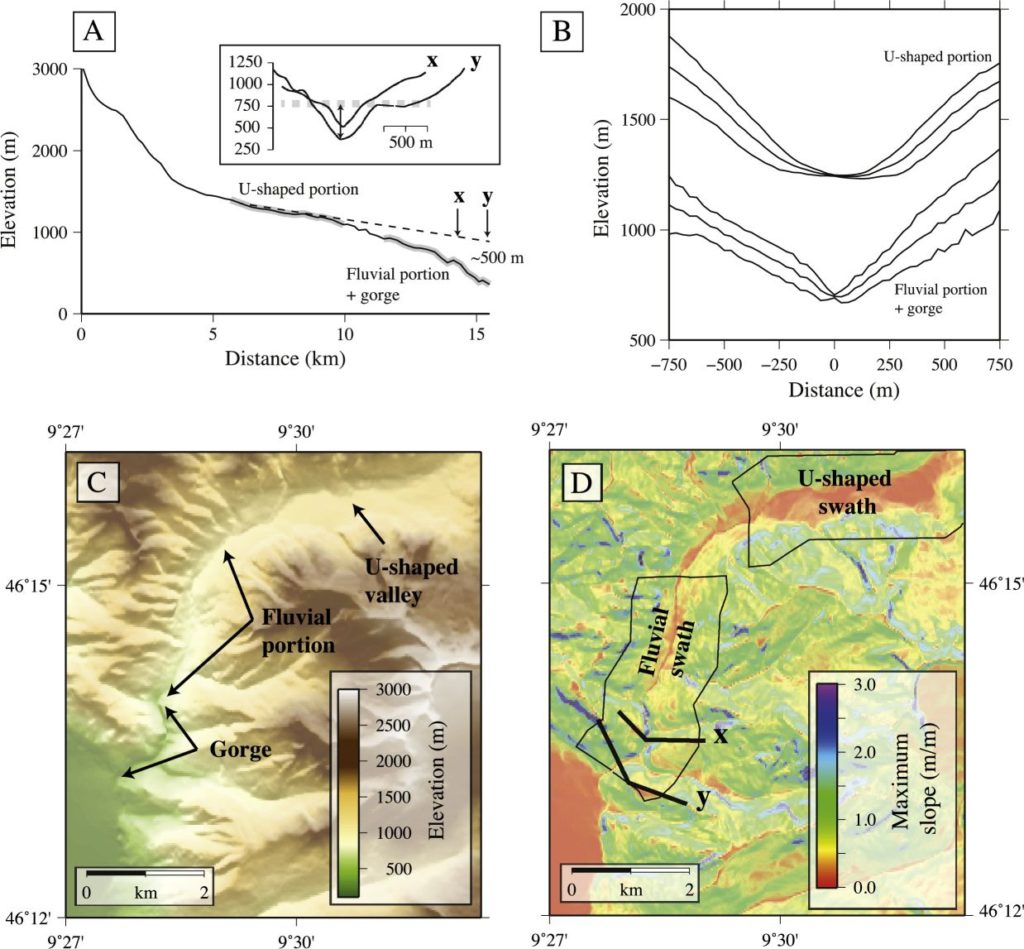
Erosion rate estimates indicate fluvial gorge formation in a catchment on the southern side of the Alps outpaced glacial erosion at the same location for the last ~400 kyr.
Fox, M., Leith, K., Bodin, T., Balco, G., Shuster, D.L., 2015. Rate of fluvial incision in the Central Alps constrained through joint inversion of detrital 10Be and thermochronometric data. Earth and Planetary Science Letters 411, 27-36.

Predicted distribution of various types of fracture beneath an Alpine valley. Here we start with a ‘V’ shaped topography, introduce ice, and manually cut out the center of the valley. Fractures forming in tension and shear are coloured yellow and orange, respectively, while active ‘micro-cracking’ is purple, and regions in which we predict explosive fracturing are marked in red under the ice. Note how the area of explosive fracturing increases as we remove ice, and the difference in fracture distribution between model Stages 14 and 32, for which the only difference is the relief of stresses during the intermediate period of deglaciation (Leith et al. 2014).
Leith, K., Moore, J.R., Amann, F., Loew, S., 2014. Sub-glacial extensional fracture development and implications for Alpine valley evolution. J. Geophys. Res. 119, 62-81.
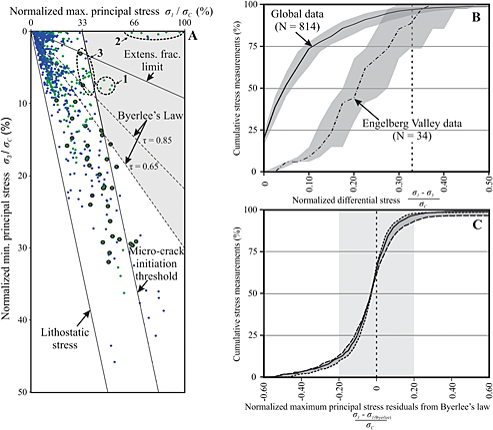
A revised compilation of in situ stress measurements indicates maximum differential stress magnitudes are limited by micro crack initiation.
Leith, K., Moore, J.R., Amann, F., Loew, S., 2014. In situ stress control on micro-crack generation and macroscopic extensional fracture in exhuming bedrock. J. Geophys. Res. 119, 594–615.
© 2024 stress-driven
Theme by Anders Noren — Up ↑
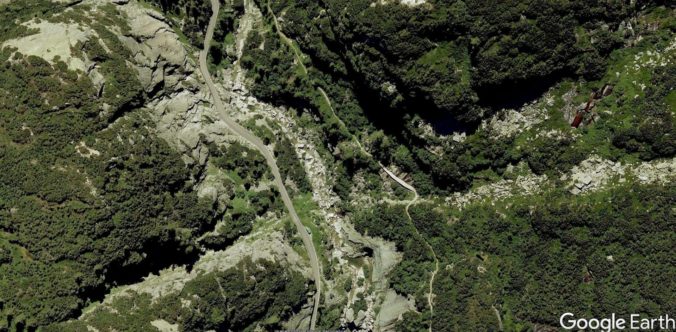
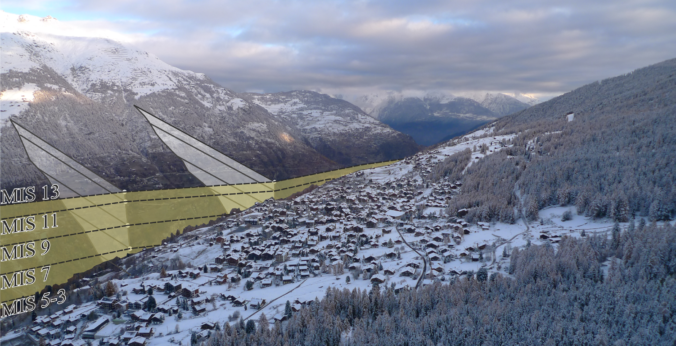
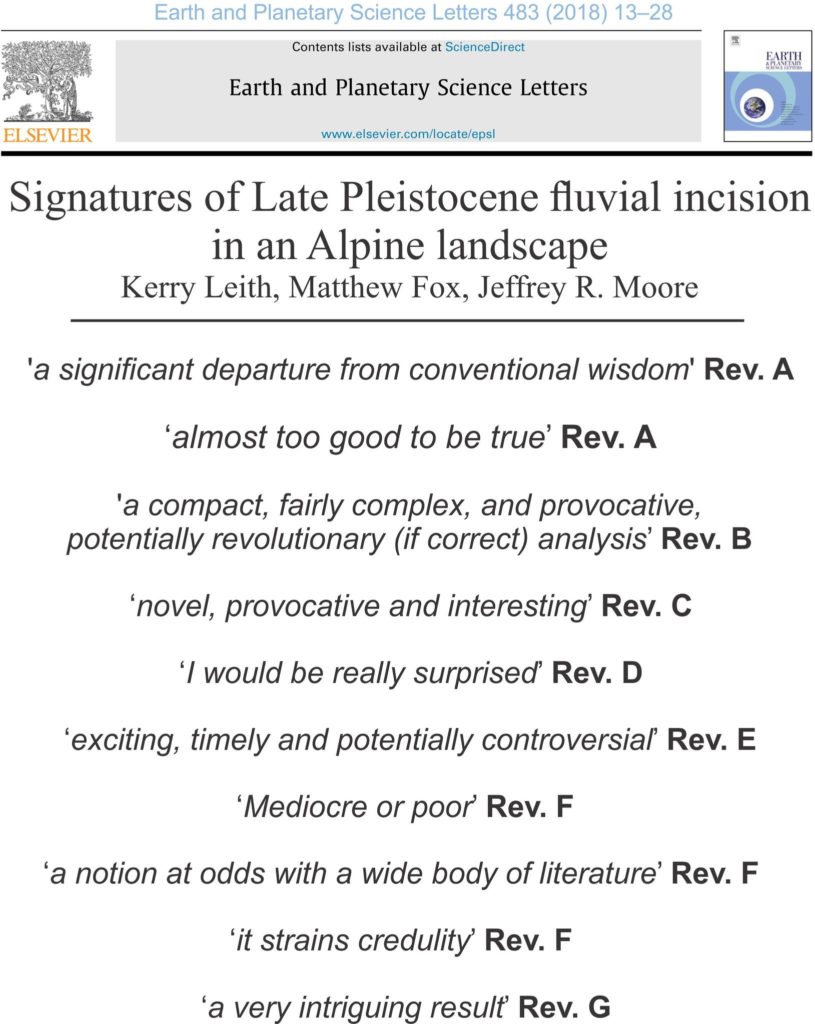

Recent Comments